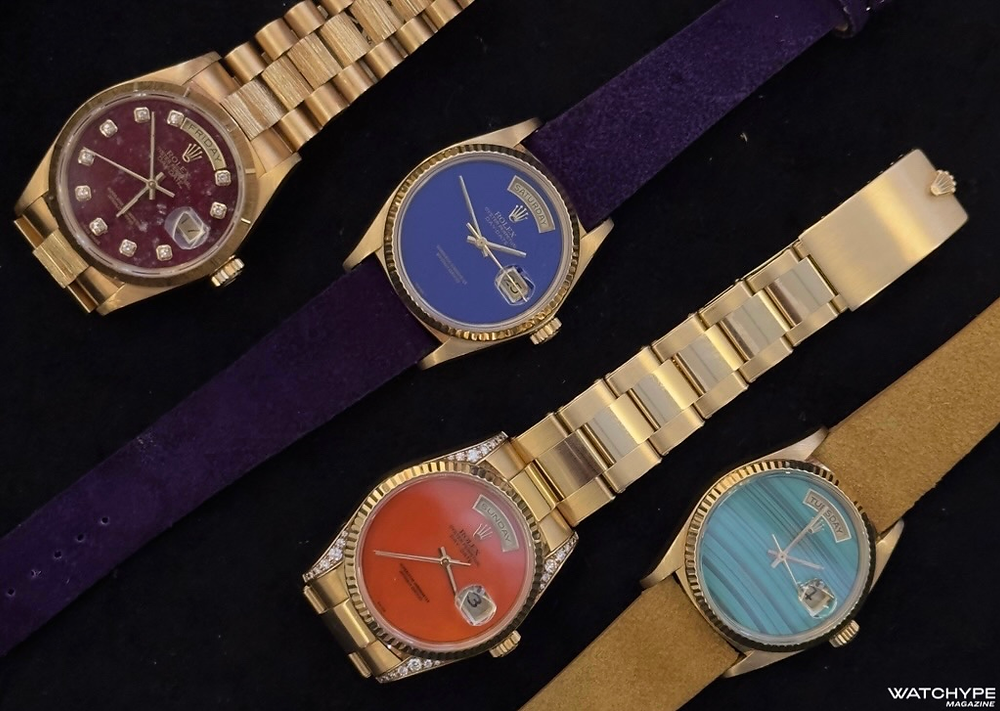The global market is being shaken by the trade decisions taken in recent months by President Trump and the U.S. administration, decisions that have become even more pressing in recent days, particularly concerning tariffs. Recently, a 15% agreement was signed with Europe, and on July 31, after declaring the trade deficit a national emergency, the administration also announced new measures that, unless further agreements are reached, will take effect against Switzerland.
The proposed tariffs on Swiss goods are as high as 39%. In this article, we will explore the potential consequences for the watchmaking industry, which is estimated to have exported around $6 billion worth of goods to the United States in 2024.
These tariffs are set to take effect on 7th of August, leaving open the question of whether watch brands will take drastic measures in the meantime to mitigate the impact of this decision.
What are the consequences of the tariffs for the retail market?
One figure that immediately highlights the impact of these measures is the stock market value of Watches of Switzerland, a retailer of Rolex and other major brands in both the U.S. and the U.K., which dropped by 8% within 24 hours of Trump’s announcement.
According to analysts at Jefferies, led by James Grzinic, tariffs of 39% would translate into immediate price increases of around 20% on paper, with the burden expected to be shared among end customers, retailers, and brands.
But how much will these higher prices affect demand, which has already been fragile in the two years following the Covid crisis and amid ongoing geopolitical uncertainty?

It’s difficult to say with certainty. After all, these are luxury goods, and their demand curves often follow different rules from those of other products. Still, this situation adds to a broader slowdown across the industry. The days of soaring demand for certain references and pre-owned prices far above retail are now a distant memory. And while much still depends on the relationship with the retailer and the type of watch, discounts are becoming increasingly common.
Looking ahead, brands may choose, after an initial rush to ship existing stock under the current tariff regime, to reduce inventory sent to the U.S. and redirect it to other markets.
Supporting this concern are figures from May, when tariffs stood at 10%. Swiss watch exports to the United States that month were down roughly 10% compared to the same period the previous year.
Ultimately, this could also affect retail prices in other markets around the world. Even a modest adjustment of a few percentage points could help cushion the potential losses for Rolex, and other major brands.

Another factor to consider is the possibility of relocating part of the production to the United States to avoid these tariffs, either entirely or partially. However, such a move could jeopardize the “Swiss Made” designation, requiring brands to be extremely cautious in ensuring compliance with the strict criteria that define it.
And for the secondary market?
Well, even more difficult to say to be honest. We first witnessed, during the pandemic, a moment when watches were viewed as safe-haven assets, with prices climbing steadily amid uncertainty.
This, however, does not seem to be the case now. In such an unstable climate, many brands risk losing a portion of their clientele, particularly less established buyers who don’t plan on building long-term collections and may now prioritize other expenses. The same goes for aspirational buyers: those who once envisioned celebrating a milestone with a watch purchase may now look elsewhere. On the other hand, it is unlikely that affluent collectors with significant spending power will alter their behavior.

This potential decline in customers, especially in a market as relatively immature as the U.S., could result in lower prices in the secondary market.
That said, the significant increase in retail prices could act as a counterweight, helping prevent values from dropping, and potentially even pushing them slightly higher, given that customers’ perception of the product has shifted, positioning these timepieces at an even higher level. European dealers with strong connections in the U.S. may well be the ones to benefit from this dynamic.
Conclusion
In the coming weeks, we will begin to see the first results of this decision, which is certain to leave a lasting mark on the watchmaking industry. Brands face numerous choices, urgent ones, that will shape their revenues not only this year but also in the years ahead.
For us in Europe, the ripple effects will surely be felt as well. Could this mean more watches available at authorized dealers and higher prices in the secondary market? Perhaps, or maybe it’s just wishful thinking.
Follow us on our social media channels to stay up to date with the latest news from the world of watchmaking, and discover what’s new on Watchype.
